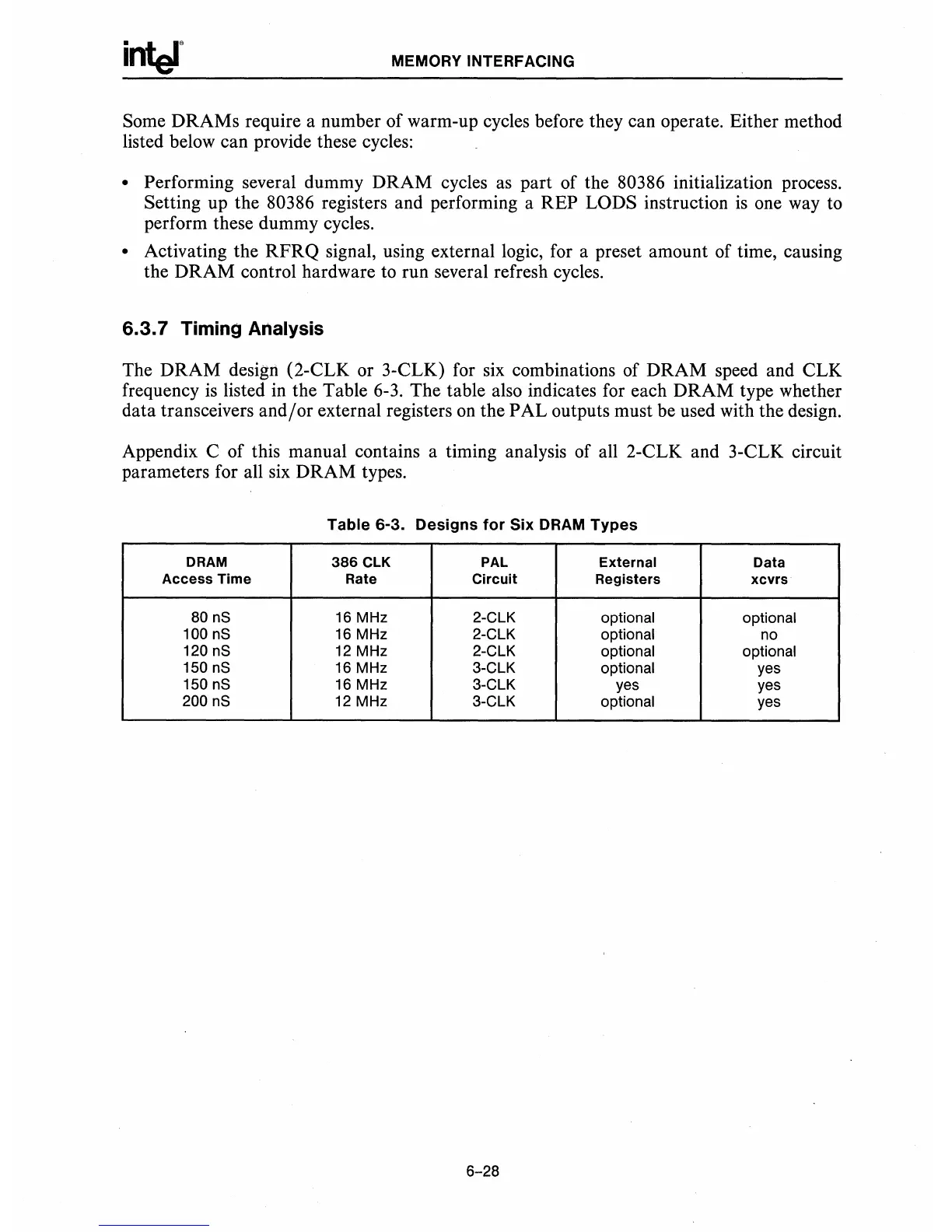MEMORY INTERFACING
Some DRAMs require a number of warm-up cycles before they can operate. Either method
listed below can provide these cycles:
• Performing several dummy DRAM cycles
as
part of the 80386 initialization process.
Setting up the 80386 registers and performing a REP LODS instruction
is
one way to
perform these dummy cycles.
• Activating the
RFRQ
signal, using external logic, for a preset amount of time, causing
the DRAM control hardware to run several refresh cycles.
6.3.7 Timing Analysis
The
DRAM
design (2-CLK or 3-CLK) for six combinations of DRAM speed and CLK
frequency
is
listed in the Table 6-3. The table also indicates for each DRAM type whether
data transceivers
and/or
external registers
on
the PAL outputs must be used with the design.
Appendix C of this manual contains a timing analysis of all 2-CLK and 3-CLK circuit
parameters for all six DRAM types.
Table
6-3.
Designs
for
Six
DRAM
Types
DRAM
386
elK
PAL External Data
Access
Time Rate Circuit Registers
xcvrs
80 nS 16 MHz 2-ClK
optional optional
100 nS 16 MHz 2-ClK
optional no
120 nS 12 MHz
2-ClK
optional
optional
150 nS 16 MHz 3-ClK optional
yes
150 nS
16 MHz
3-ClK
yes
yes
200 nS
12 MHz
3-ClK
optional
yes
6-28

